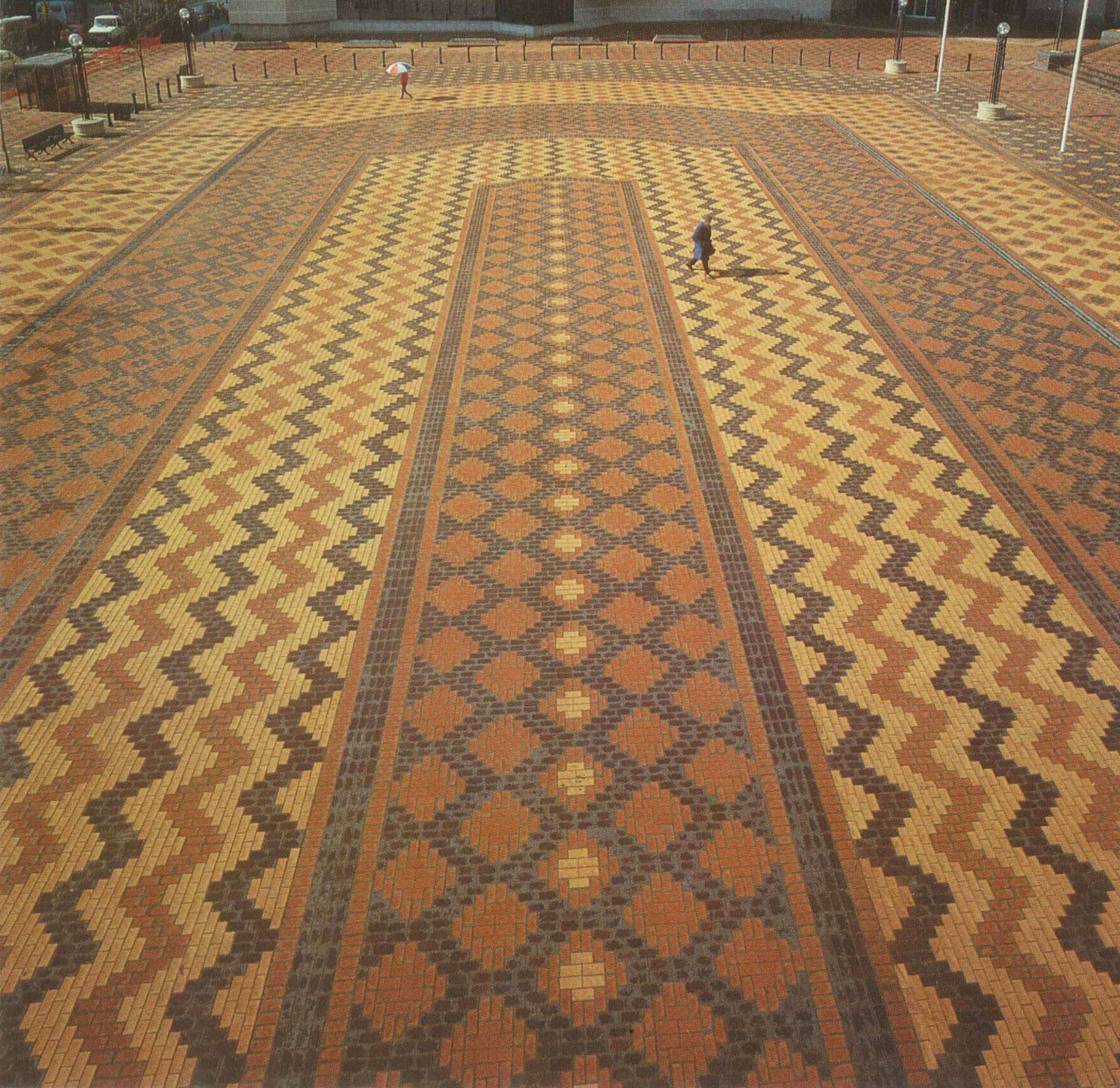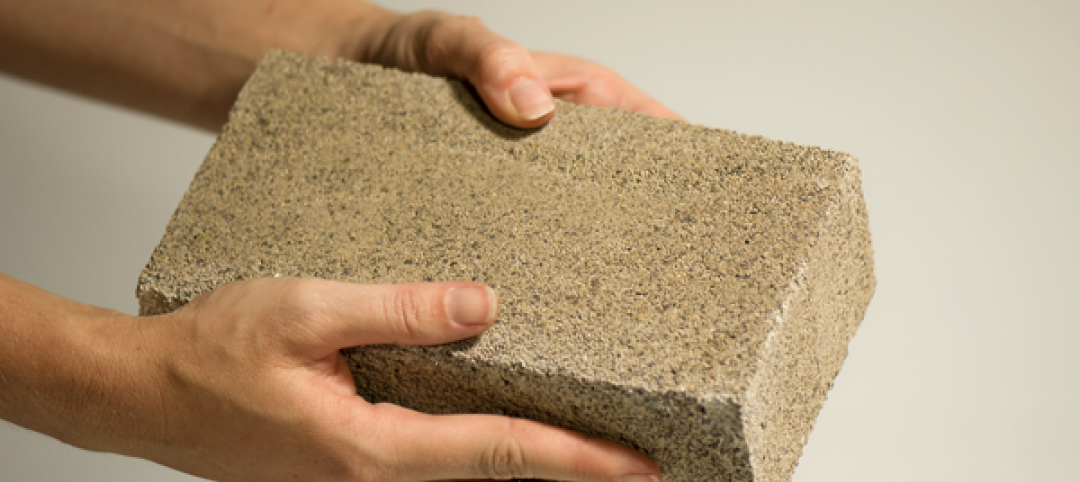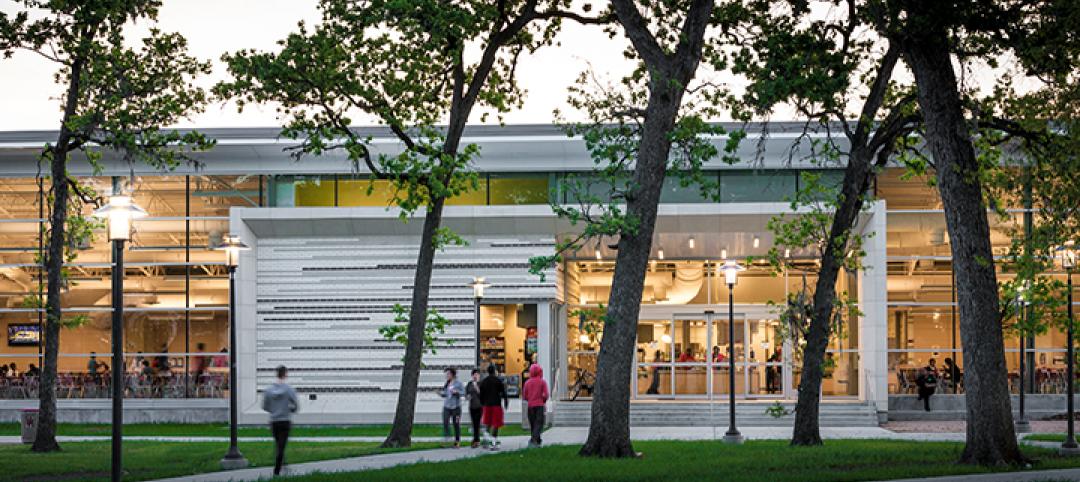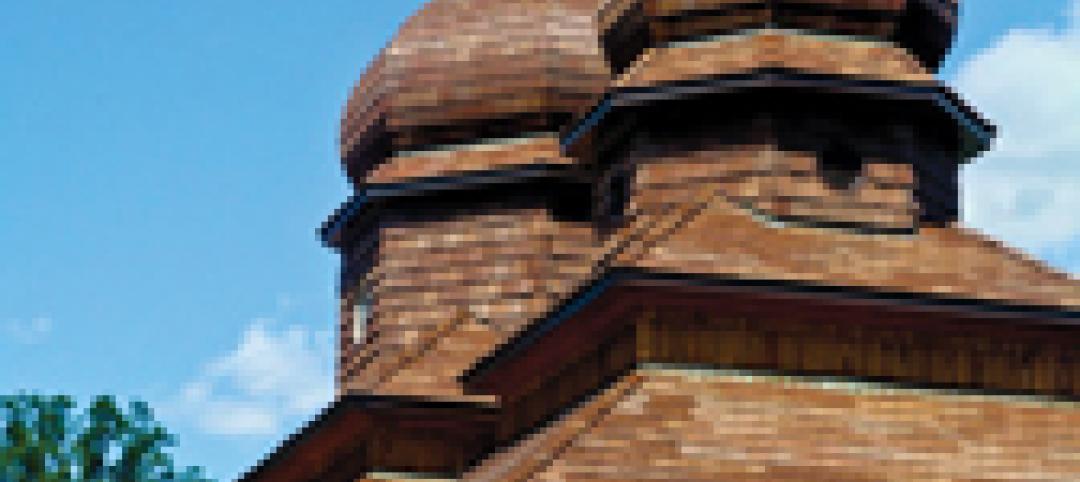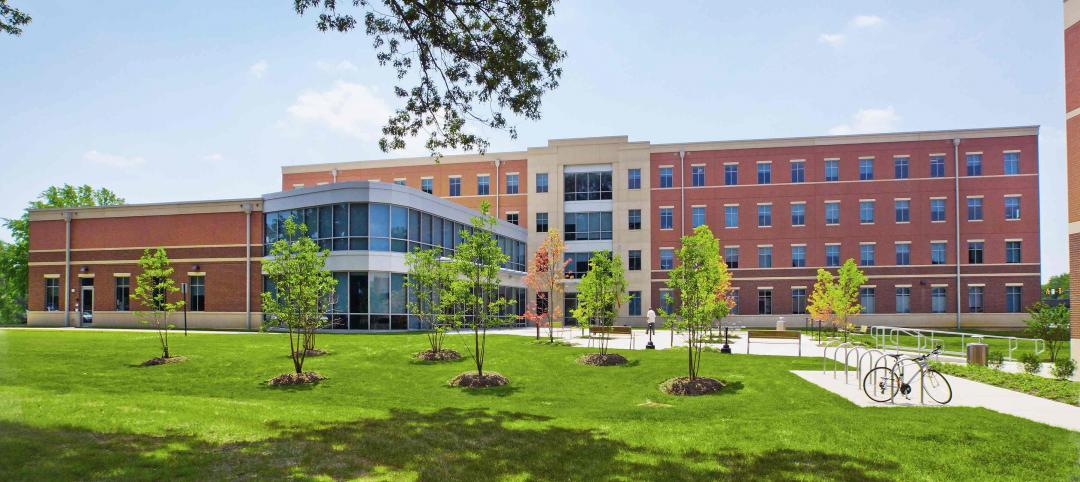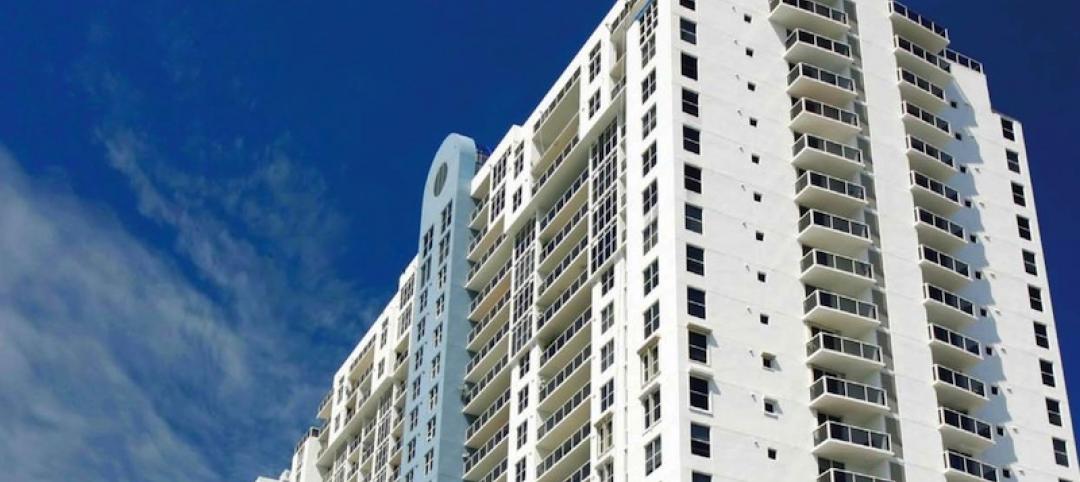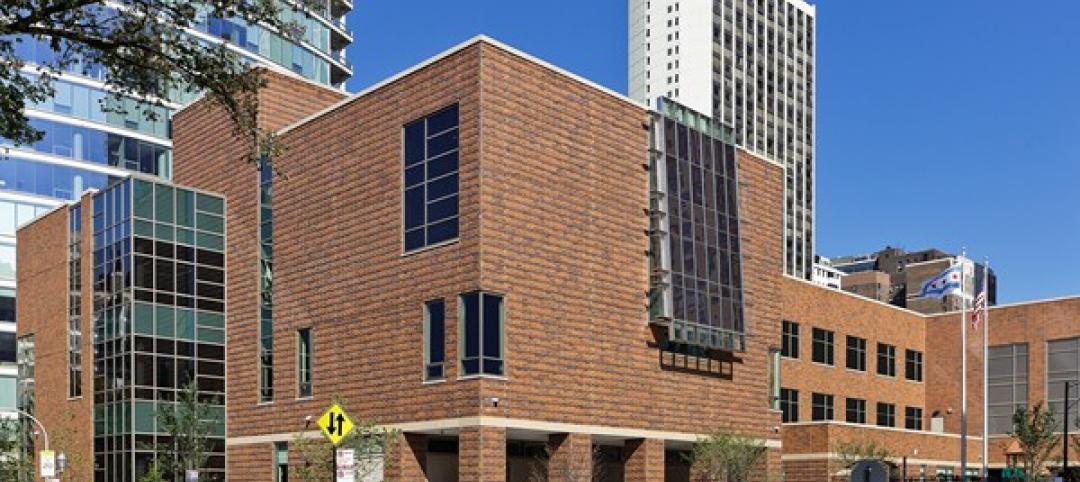A building’s façade is much more than a pretty face. Exterior cladding plays a dual role as the architecture’s primary aesthetic and the building envelope’s first layer, making it one of the most important technical and aesthetic components of a building. Consequently, Building Teams tend to choose carefully when deciding upon façade materials.
The tradeoffs often lead to the choice of masonry, masonry veneers, thin brick, and other manufactured stone systems. When Building Teams are looking for maximum impact resistance in heavily trafficked areas, masonry may be favored over other options, even those that may be lighter and less expensive.
Synthetic stucco and exterior insulation and finishing system (EIFS) products are popular, and new requirements have been developed to further guarantee their performance. The main appeal of stucco-like products is their thermal performance and water resistance. But some architects and end-users prefer exterior cladding that may offer even greater weathering resistance and long-term consistency of appearance. The choice of brick, stone, or masonry is especially the case when it comes to higher education, healthcare, and corporate clients, who are building for the long term.
Consequently, brick, stone, and masonry often emerge as the cladding of choice for these venues. Because they offer an attractive, handsome look, more designers are choosing to mix up the materials.
“Brick and stone are a natural combination with several millennia of successful use,” states Bruno P. Gubetta, president, Alpine Restoration (www.AlpineRestorationVT.com), Waterbury, Vt. “The main appeal is to create architectural interest and articulate the impact of the elevation. Laura Wernick, AIA, LEED AP, REFP, senior principal at HMFH Architects (www.hmfh.com), Cambridge, Mass., notes, “Mixing of materials adds rich possibilities for patterning, for breaking up the massing of a building, and for highlighting specific areas such as entrances or special spaces.”
Mixing materials can extend beyond masonry to include other cladding types as well. “Brick unit masonry, metal panel skins, and curtain wall combinations have been dominating our design studio in the last several years,” says Joel R. Bernard, AIA, NCARB, LEED AP, principal of Pittsburgh-based designers IKM Inc. (www.ikminc.com).
LEARNING OBJECTIVES
After reading this article, you should be able to:
+ Discuss the main criteria for selecting and specifying brick and masonry in commercial construction for durable, green building that enhances occupant health and welfare.
+ List key benefits of masonry systems to optimize weather barriers in vertical enclosures or to mitigate stormwater runoff and prevent excessive wear on horizontal surfaces.
+ Compare natural stone products and manufactured stone or thin brick in terms of durability, life cycle, environmental benefits, and material resources.
+ Describe basic installation criteria to extend building life and improve building envelope performance using manufactured stone, masonry, thin brick, and natural stone surfaces and cladding.
For practical reasons, designers often choose to clad a building’s lower, more visible sections with masonry, while specifying less expensive stucco or metal panels for the higher, less visible areas.
Brian E. Trimble, PE, LEED AP, regulatory vice president for engineering services and architectural outreach with the Brick Industry Association (www.gobrick.com), Seven Fields, Pa., acknowledges the innovative designs coming out of this mix-and-match trend, but he also points out some detailing problems that must be worked out. “Most of the issues revolve around compatibility of materials, specifically, differential rates of expansion and contraction,” he says.
Deailing the interface correctly
Trimble, a recognized masonry expert offering BIA technical support for close to 20 years, recommends separating different materials to give each type of cladding the ability to expand and contract at its own rate. For example, concrete block masonry shrinks and clay brick grows, so the installation of a bond break between the materials should solve this problem. “Providing expansion/control/isolation joints within the wall at industry-recommended distances also leads to good performance,” he cautions.
IKM’s Bernard, who has been designing building façades for the past three decades, points out that metal skins and curtain wall tend to expand and contract in differing weathering conditions to a much greater extent than masonry, so detailing the expansion mullions and panel slip joints is critical. “We have begun to use multi-component spray foams on the backside of the cavity ends and seams between the masonry and metal systems,” he explains. “The tenacious adherence and flexibility of these foams also make them ideal insulators.”
Another important concern is the proper termination of materials to ensure that the cladding performs as an effective weather barrier.
Robert M. Donaldson, LEED AP BD+C, NCARB, an architect with Bostwick Design Partnership (www.bostwickdesign.com), Cleveland, recommends sealing the top of a vertical run with flashing, coping, or other sealing materials and holding the bottom off grade to enable proper drainage. If the material changes in the vertical direction, then through-wall flashing, sealant, and a water table (in the case of masonry) should be applied to create a clean horizontal line and enable movement between the materials.
He explains how to do it properly: “For a horizontal run of material, I strongly recommend that a band of material terminate within a closed corner in order to avoid the appearance of a material being an appliqué onto a building or project. When returning a material, the one which has the least amount of expansive movement should be the primary material to return to the structure. The secondary material then returns to the primary and is sealed to it in order to provide expansive movement.”
To assist contractors with these details, standards provided by the various trade organizations, including the Brick Industry Association and the Cast Stone Institute, can be valuable resources.
Brick pavers: built to last
Another popular application of brick is exterior paving due to its high compressive strength, resistance to deicing salts, a wide variety of color choices, and brick’s ability to maintain its color when exposed to UV radiation, according to Tammy Lednum, owner and chief financial officer, D.W. Masonry (www.themasonryexperts.com), Denton, Md.
Pavers are an extremely durable material, particularly in cold climates, as evidenced by the number of clay brick roads installed in the northern part of the country a century ago and which are still in use.
“Clay brick paving and granite edge restraint will last forever,” claims Gubetta, a master mason for close to 35 years. “The key benefit of clay brick paving is not just the durability, but the creation of an attractive surface that invites storefront development and pedestrian traffic, and becomes a community attraction. All over America, fired clay brick plazas and streets have become iconic expressions of community.”
Edward Gerns, a principal at Wiss, Janney, Elstner Associates (www.wje.com), Chicago, also acknowledges the aesthetic appeal of brick pavers, particularly the way brick enables designers to create continuity between a building’s interior and exterior.
Yet another benefit is permeable paving’s ability to mitigate stormwater runoff. In fact, BIA recently came out with a new Technical Note on these systems (http://www.gobrick.com/Portals/25/docs/Technical%20Notes/TN14D.pdf) due to their increasing popularity and the number of brick manufacturers promoting it.
This latest resource complements BIA’s full series of technical guidelines for pavers covering sand set, bituminous set, mortar set, and combinations of the various types. Boiling all this advice down to the essentials, Trimble recommends choosing the correct system for the expected travel volumes and existing soil conditions.
Lednum identifies “flexible” systems, where the pavers are placed on a sand setting bed without mortar, as a popular choice. “This system allows the pavers and pavement to interlock and resist all loads placed on them,” she explains.
However, Gerns, who developed his expertise in masonry systems through extensive condition surveys and exterior wall evaluations, points out that the sand set systems do require regular maintenance, as the sand tends to migrate; this can cause the pavers to shift and settle. It should be noted that the mortar set systems, while more appropriate for heavy loading, are more susceptible to deterioration due to water infiltration and subsequent freeze-thaw damage of the setting bed.
Brick makes its move inside
While brick is an established choice for external façades or to dress up a courtyard or town square with pavers, brick is also making an impact on interiors.
“We see a wide variety of brick uses for interiors, from simple paving patterns on a floor to intricate brick sculptures used to form an identity for a company, school, or group,” says Brian E. Trimble, PE, LEED AP, regulatory vice president for engineering services and architectural outreach with the Brick Industry Association, Seven Fields, Pa. “Because brick is a modular product, we see the ability of creating patterns with brick and mortar joints, using two or three colors of brick, and in some cases, even using different textures of brick.”
Brick can be used to accent features, to connect an interior to the exterior, or to create a dramatic flooring statement in public spaces, says Edward Gerns, a principal with Wiss, Janney, Elstner Associates, Chicago. Designers will choose between vertical or horizontal patterning, depending upon their goal.
“Vertical patterning is often used when the designer is trying to accentuate the verticality of an element or the height of a space,” he says. “By contrast, horizontal patterns tend to read flatter and shorter and accentuate a lower profile, as the eye tends to follow the horizontal lines of the pattern.”
In many cases, however, the deciding factor with regard to patterning is the dimensions of the wall. “If the wall is taller than it is wide, vertical patterns seem to fit. If the opposite is true, horizontal banding or other types of courses seem to be more appropriate,” advises Tammy Lednum, owner and chief financial officer, D.W. Masonry, Denton, Md.
Whether it’s mimicking the look of a colonial kitchen with authentic handmade brick, or shooting for an art deco finish with ceramic glazed brick, patterns and designs are only limited by the imagination of the Building Team members.
“If you can see it in your mind, you can build it out of brick,” states Bruno P. Gubetta, president of Alpine Restoration, Waterbury, Vt.
To assist with this, Donaldson, who has worked on more than 100 masonry projects, recommends a drainage system in addition to using masonry dimensions for the installation’s layout.
In terms of detailed guidelines for paver installation in lightly trafficked areas, Donaldson advises as follows: “The bricks should be set in a bed of sand on top of drainable gravel. The gravel bed may have a pitch to it in order to drain, while the sand bed is set flat and compacted. The brick pavers are then set on top of the sand bed and spaced 3/8 of an inch to one-half-inch apart from one another. The spaces between the pavers are then infilled with sand and compacted to form a ‘grout’ bed similar to that of a brick wall.”
For medium- to high-traffic areas, Donaldson prefers a concrete slab with applied asphalt coating pitch to a storm drain. After setting the concrete and asphalt coating, the compacted sand bed and brick pavers are used to infill the slab.
Stone cladding: long life, wide choice
Natural stone cladding, like brick, offers great longevity, often exceeding the life of the building itself. Today’s popular choices include sandstone, limestone, granite, slate, and marble, with applications spanning exterior cladding, interior walls, and floors—particularly in public spaces, fireplace surrounds, and countertops.
As a result of the quarrying, veining, and cutting of natural stone, each stone has its own character, so if slight variations among the stones are desired, than genuine masonry products are a valid application. However, when strict uniformity is desired—along with the look of natural stone—specifiers usually go with fabricated stone.
Caution: Once the surface chips on a faux stone installation, it will often be more noticeable as the colors are usually only on the surface, whereas with natural stone the material is consistent throughout the entire stone, according to Lednum.
At the same time, designers must consider not only the likely higher first cost but also the heavier weight of natural stone. “For both floor and wall applications, stone installation subjects the substrate with additional weight, which needs to be addressed from a structural standpoint,” says Donaldson. “By requiring a depressed slab and additional structural modifications for interior stone, a project may realize consequential additional construction costs.”
For example, the floor substrate supporting a natural stone floor must be extremely sturdy. To test this out, Gubetta uses what he calls the “coffee cup test.” Prior to installing the stone over a wood-framed deck construction, a coffee cup is filled to the brim with water and placed directly on the substrate. “Jump and stomp on this wood-framed floor heavily with construction boots. If no water spills, the floor is ready for stone tile. If it spills, add more structural support to this wood framing before setting stone.”
When designers prefer the longevity and performance of natural stone but don’t have the budget for it, one solution can be combining faux and genuine stone.
“The real stone is installed at the lower portions of the building and the manufactured stone is installed at the higher elevations,” explains Gerns. “Attempts to match the real stone have mixed results depending on the stone. In some instances the materials are intentionally contrasting as an aesthetic decision.”
One case where this approach worked quite well was at the newly opened Rashi Jewish Day School in Dedham, Mass., where HMFH Architects specified stone for the floor tiles in the main lobby for reasons of aesthetics and durability. However, for other central areas within the building, the architects went with manufactured stone in order to express the warmth and richness of stone, while staying on budget.
Installation advice: getting it right
Regarding best practices for stone installation, Gerns cautions that these systems, particularly faux stone, are sensitive to installation shortcuts. Consequently, proper preparation of the substrate, in addition to carefully understanding how it will perform, is essential.
“Exterior detailing to minimize exposure of the system to excessive water can help to minimize the potential for failure,” cautions Gerns. “While interior applications are much more forgiving, these systems should nevertheless be installed in strict accordance with all manufacturer recommendations. The designer should request site presence [from a manufacturer’s representative] during the initial installation or mockup stage of the project to verify that the system is being installed as intended.”
Gerns also points out that the quality of fabricated stone can vary significantly from one manufacturer to the next, so it’s important to keep an eye out for things like deleterious materials and improper curing, which can create a product more susceptible to deterioration from exposure.
Even with the highest-quality systems, including those where a secondary water management system has been incorporated into the cladding system, regular maintenance is required to minimize moisture infiltration. For example, Gerns warns that topical sealer applications have limited service lives and need to be reapplied periodically in order to maintain the integrity of the surface’s hydrophobic properties.
One noteworthy difference between genuine and manufactured stone installations is that manufactured systems are set in a grout bed and applied directly to a subsurface without an air space, whereas authentic stone cladding does require an air space for proper ventilation, weeps, flashing, and a termination at the top and bottom of the installation, according to Donaldson.
To deal with this air space, Christian Rogers, AIA, LEED AP, principal architect with Blackmon Rogers Architects (www.blackmonrogers.com), Mountain Brook, Ala., advises the following: “Working on the assumption that water may eventually find its way through a masonry veneer, we use a mortar net at the lower weeps with open quadro-vent type weeps at the top and bottom of the air space to allow air to circulate through the cavity and dry the veneer from the rear.”
EDITOR’S NOTE
This completes the reading for this course. To earn 1.0 AIA/CES learning units (HSW/SD), study the article carefully and take the 10-question exam (80% passing grade) posted at www.BDCnetwork.com/BrickStoneMasonry.
The growing popularity of thin brick veneers
An increasingly popular alternative to traditional brick, thin brick veneers offer the look of brick with reduced support requirements, opening up new possibilities for brick masonry applications.
“Thin brick veneers offer designers the ability to put brick where it normally would not be able to go, for example, at the penthouse on top of a building to enclose the mechanical equipment, or on a faux chimney, cupola, or gable where there is no masonry-bearing shelf,” explains Bruno P. Gubetta, president of Alpine Restoration, Waterbury, Vt. “Thin brick can also be used anywhere on the interior, just like tile, even on vaulted ceilings.”
Blackmon Rogers Architects decided to use thin brick veneer for the interior wall cladding at a religious youth center. Aiming to create a space reminiscent of a café set in an old warehouse building, the bricks were applied like tile without any need for structural reinforcement. In this case, thin brick worked well as a lightweight, durable cladding; however, Christian Rogers, AIA, LEED AP, principal architect with the Mountain Brook, Ala.-based firm, notes that properly detailing the windows on this job was the most important consideration. In addition, he cautions, “Outside corner veneers are required to maintain the look of a thick masonry wall. If you scrimp on this detail, the illusion of thickness fails and the result looks thin and cheap, in addition to being more susceptible to damage.”
While thin brick is less expensive than traditional brick, it is also generally less durable, meaning that for projects to be successful, they must depend on high-quality installation workmanship and materials. In addition, the material traditionally relies on glue, although a recent product offering may be changing this. According to Gubetta, a new siding system utilizes steel rails to mechanically fasten each thin brick tile, thereby creating a permanent bond without glue.
While thin brick is still a relatively small portion of the clay brick market, according to the Brick Industry Association, most manufacturers are now offering thin brick units.
Related Stories
| Nov 27, 2013
Wonder walls: 13 choices for the building envelope
BD+C editors present a roundup of the latest technologies and applications in exterior wall systems, from a tapered metal wall installation in Oklahoma to a textured precast concrete solution in North Carolina.
| Nov 19, 2013
Top 10 green building products for 2014
Assa Abloy's power-over-ethernet access-control locks and Schüco's retrofit façade system are among the products to make BuildingGreen Inc.'s annual Top-10 Green Building Products list.
| Sep 26, 2013
Sheep's wool insulation, bio-brick among Cradle to Cradle product innovation finalists
Ten finalists are competing for $250,000 in prizes from the Cradle to Cradle Products Innovation Institute and Make It Right.
| Jul 19, 2013
Best in brick: 7 stunning building façades made with brick [slideshow]
The Brick Industry Association named the winners of its 2013 Brick in Architecture Awards. Here are seven winning projects that caught our eye.
| May 14, 2013
CalStar products adds second shift to manufacturing plant
Increasing demand for CalStar’s sustainably manufactured bricks, pavers, Thru-Wall units, and wet cast products brings 17 new jobs to Racine area.
| Apr 19, 2013
Must see: Shell of gutted church on stilts, 40 feet off the ground
Construction crews are going to extremes to save the ornate brick façade of the Provo (Utah) Tabernacle temple, which was ravaged by a fire in December 2010.
| Apr 3, 2013
AIA CES class: Sealant repairs that last – hybrid sealants for building restoration
It is hard to talk about restoration without talking about sustainability. This two-hour interactive online course discusses the role that restoration can and does play in the arena of sustainability, and specifically the role that sealants play in sustainable design and repair.
| Mar 29, 2013
Shenzhen projects halted as Chinese officials find substandard concrete
Construction on multiple projects in Guangdong Province—including the 660-m Ping'an Finance Center—has been halted after inspectors in Shenzhen, China, have found at least 15 local plants producing concrete with unprocessed sea sand, which undermines building stabity.
| Feb 28, 2013
BIA opens entries for 2013 Brick in Architecture Awards
The Brick Industry Association (BIA) has opened entry submissions for its 2013 Brick In Architecture Awards—with a new Renovation/Restoration category and new category divisions this year. BIA’s annual awards honor architectural excellence and sustainable design nationwide that incorporates clay brick products as the predominant exterior building or paving material.


